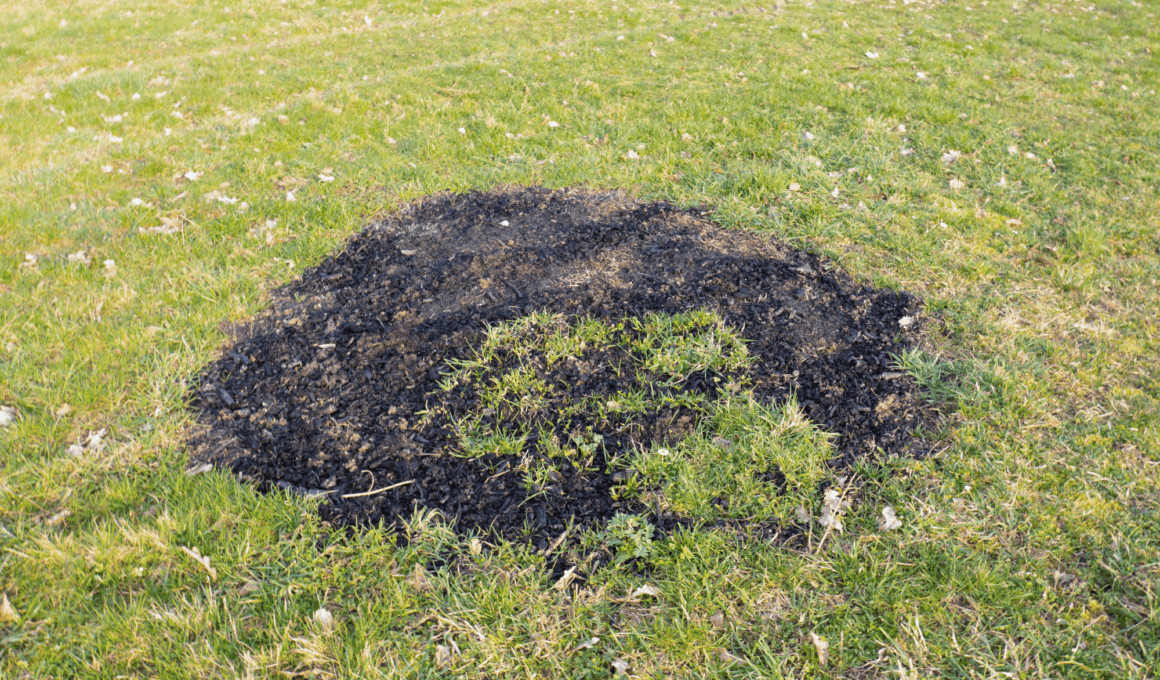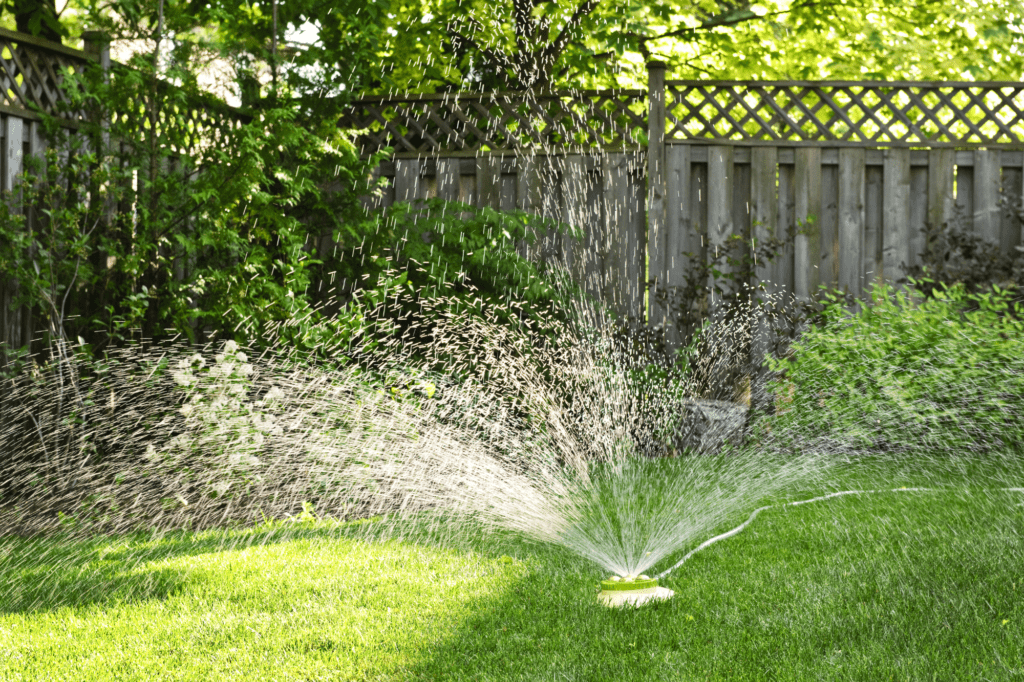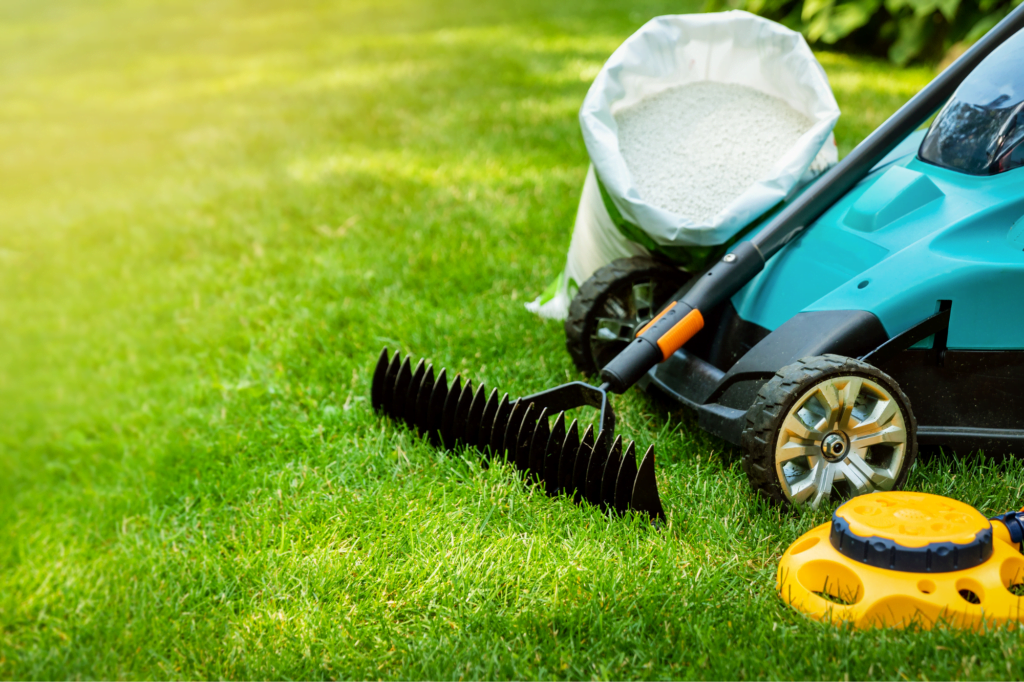Are you tired of looking at your burnt, brown lawn? Don’t worry, you can revive it and make it green again!
In this article, we will guide you through the steps to get your burnt grass back to its lush, vibrant state.
First, you need to assess the damage to your lawn and determine the cause of the burn.
Then, it’s crucial to properly water your lawn, making sure to avoid overwatering or underwatering.
Adjusting your mowing practices is also important, as cutting the grass too short can further damage it.
Apply fertilizer and nutrients to replenish the soil’s nutrients and promote healthy growth.
Additionally, overseed and repair any bare patches to fill in the gaps.
Controlling weeds and pests is essential to maintain a healthy lawn.
Ensure your grass receives adequate sunlight and shade throughout the day.
Lastly, regularly maintain and care for your lawn to keep it green and thriving.
Follow these steps, and soon enough, your burnt grass will be a thing of the past!
Quick Summary
- Properly assess the damage to the grass by looking for brown or yellow patches, brittle grass blades, signs of wilting, and areas where the grass has died off.
- Repair the damaged areas by removing dead grass and loosening the soil, then overseed with suitable grass seed and water thoroughly.
- Adjust watering practices by watering early in the morning or late in the evening, aiming for 1 inch of water per week, watering evenly, and avoiding overwatering.
- Improve the soil quality and provide essential nutrients by applying organic fertilizers such as compost, bone meal, fish emulsion, alfalfa meal, or seaweed extract.
Assess the Damage to Your Lawn
You’ll need to take a close look at your lawn to assess how much damage has been done. Assessing the damage is crucial to determine the best course of action to repair your burnt grass.
Start by examining the affected areas and identifying the extent of the damage. Look for brown or yellow patches, brittle grass blades, and signs of wilting. Take note of any areas where the grass has completely died off.
Once you have assessed the damage, it’s time to move on to repairing it. Begin by removing any dead or severely damaged grass. Use a rake or a lawn mower set to a low cutting height to carefully remove the dead grass. This will allow for better air circulation and light penetration to the healthy grass underneath.
After removing the dead grass, loosen the soil in the affected areas using a garden fork or aeration tool. This will help the new grass establish its roots more easily.
Next, it’s time to overseed the damaged areas. Choose a grass seed that is suitable for your climate and soil type. Spread the seed evenly over the bare patches, making sure to cover the entire area. Lightly rake the seed into the soil to ensure good seed-to-soil contact.
Water the newly seeded areas thoroughly, keeping the soil consistently moist until the grass germinates and establishes itself.
By assessing the damage and taking the necessary steps to repair it, you can get your burnt grass green again and restore the beauty of your lawn. Remember to water regularly, provide proper nutrients, and avoid excessive foot traffic to help the new grass grow strong and healthy.
Properly Water Your Lawn
Maintaining a lush and vibrant lawn begins with effectively watering it. Properly watering your lawn is essential to revive burnt grass and promote healthy growth.
Follow these best watering practices to bring life back to your lawn:
- Watering schedule: Establish a regular watering schedule to ensure your lawn gets the moisture it needs. Water early in the morning or late in the evening to minimize evaporation and allow the grass to absorb water effectively.
- Deep watering: Instead of frequent shallow watering, give your lawn a deep soak. This encourages the grass roots to grow deeper, making them more resilient to drought conditions. Aim for about 1 inch of water per week, including rainfall.
- Water evenly: Make sure to water your lawn evenly to avoid creating dry patches. Use a sprinkler system or hose with a sprinkler attachment to ensure every corner of your lawn receives adequate moisture.
- Avoid overwatering: While water is essential, overwatering can be detrimental to your grass. It can lead to shallow root growth, disease, and weed growth. Check the soil’s moisture level before watering to prevent excessive watering.
By following these watering practices, you can revive your burnt grass and maintain a healthy and vibrant lawn. Remember, a well-watered lawn not only looks beautiful but also contributes to the safety and well-being of your outdoor space.
Adjust Your Mowing Practices
To optimize your lawn’s health, it’s important to make adjustments to your mowing practices. Proper mowing techniques are crucial to revive burnt grass and promote its regrowth.
Firstly, ensure that your lawnmower blades are sharp, as dull blades can tear the grass instead of cutting it cleanly. This can lead to further damage and hinder the recovery process. Additionally, avoid cutting the grass too short, as longer blades provide shade to the soil and help retain moisture. Set your mower to a higher setting to leave the grass a bit longer.
Soil aeration is another essential aspect of proper mowing practices. Aerating your lawn allows for better water and nutrient absorption, promoting healthier grass growth. Consider using a lawn aerator or a garden fork to create small holes in the soil. This will improve air circulation and prevent the soil from becoming compacted.
Remember to mow your lawn when it’s dry to avoid slipping or causing accidents. Always wear appropriate footwear and protective gear, such as goggles and gloves, to ensure your safety while mowing.
By following these tips and adjusting your mowing practices, you can help revive your burnt grass and maintain a healthy, vibrant lawn.
Apply Fertilizer and Nutrients
Applying fertilizer and nutrients helps nourish the soil and promote the revival of your lawn’s health. It’s important to improve the soil quality to ensure your grass gets the necessary nutrients. Using organic products is not only safe for you and your family, but also for the environment. Organic fertilizers not only provide essential nutrients but also improve the soil structure, allowing it to retain moisture better. This helps prevent future drought stress and reduces the risk of burning your grass.
Here’s a helpful table to guide you in choosing the right organic fertilizer for your lawn:
| Organic Fertilizer | Benefits |
|---|---|
| Compost | Improves soil structure and adds organic matter |
| Bone Meal | Promotes strong root growth |
| Fish Emulsion | Provides a balanced mix of nutrients |
| Alfalfa Meal | Boosts soil fertility and improves drought tolerance |
| Seaweed Extract | Enhances nutrient uptake and stimulates growth |
Remember to follow the instructions on the fertilizer packaging and don’t overapply. Over-fertilizing can harm your grass and even pollute nearby water sources. It’s best to apply the fertilizer evenly and water it in well. By incorporating organic fertilizers and improving your soil, you can revive your burnt grass and enjoy a healthy, green lawn once again.
Overseed and Repair Bare Patches
For a lush and thriving lawn, consider overseeding and repairing any bare patches to achieve a revitalized and resilient landscape.
Overseeding is the process of spreading grass seed over existing grass to thicken the lawn and fill in any bare spots. This technique has numerous benefits, including improving the overall appearance of the grass and enhancing its ability to withstand stressors such as high foot traffic and drought.
To begin the overseeding process, start by preparing the bare patches. Remove any dead grass, debris, or weeds from the area and loosen the soil with a rake. This will create a suitable environment for the new grass seed to germinate and establish roots.
Next, select a high-quality grass seed that’s compatible with your existing grass type and climate conditions. When applying the seed, make sure to distribute it evenly across the bare patches. You can use a spreader or simply sprinkle it by hand. Lightly rake the seed into the soil, ensuring good seed-to-soil contact.
Water the area thoroughly and continue to keep it moist until the new grass seed germinates. Overseeding not only fills in bare spots but also helps to improve the overall health and density of your lawn.
By following these steps, you can achieve a green and vibrant lawn that’ll make your neighbors envious.
Control Weeds and Pests
Keep your lawn in top shape by controlling weeds and pests, so you can enjoy a healthy and thriving outdoor space.
Weed control is an essential part of maintaining a green and lush lawn. Start by identifying the types of weeds that are present in your yard. This will help you choose the most effective method for eliminating them. Pulling weeds by hand can be a tedious task, but it’s a safe and effective way to remove them. Make sure to wear gloves to protect your hands.
For larger areas, you may want to consider using an herbicide specifically designed for weed control. Be sure to follow the instructions carefully and avoid spraying on windy days to prevent the herbicide from drifting onto your desirable plants.
Pest management is another crucial aspect of lawn care. Common lawn pests include insects like grubs, ants, and chinch bugs. To control these pests, you can use insecticides that are safe for your lawn and family. Remember to read and follow the label instructions to ensure proper application and safety.
Additionally, practicing good lawn maintenance such as regular mowing and watering can also help prevent pest infestations. By taking these steps to control weeds and pests, you can maintain a healthy and vibrant lawn that you and your family can enjoy all season long.
Provide Adequate Sunlight and Shade
Ensuring your lawn receives sufficient sunlight and shade is essential for maintaining its health and vitality throughout the year. Proper sunlight management and the importance of shade in lawn care cannot be overstated. Here are three key factors to consider:
- Sunlight exposure: While sunlight is crucial for the growth of healthy grass, excessive exposure can lead to burning and dryness. It’s important to monitor the amount of direct sunlight your lawn receives and make necessary adjustments. Consider trimming overhanging branches or using shade sails to provide some relief during the hottest parts of the day.
- Shade benefits: Shade plays a significant role in lawn care as it helps to reduce the risk of heat stress and evaporation. It provides a cooler environment for the grass to thrive and prevents excessive water loss. Strategically placing shade trees or installing shade structures can help create the right balance between sunlight and shade.
- Proper positioning: When planning the layout of your lawn, take into account the natural shading from nearby structures or trees. Make sure that areas that receive more sunlight are suitable for sun-loving grass varieties, while areas with more shade are suitable for shade-tolerant varieties.
By managing sunlight and shade effectively, you can create a safe and healthy environment for your lawn to flourish. Remember to monitor the amount of direct sunlight, provide adequate shade, and position your lawn appropriately to achieve optimal results.
Regularly Maintain and Care for Your Lawn
Maintaining and caring for your lawn on a regular basis is the key to cultivating a lush and thriving outdoor oasis. To ensure your grass stays green and healthy, it’s important to follow some essential lawn care tips. Here are a few green lawn secrets that will keep your lawn looking its best while also prioritizing safety.
| Lawn Care Tips | Green Lawn Secrets | Safety Measures |
|---|---|---|
| Mow regularly | Use organic fertilizer | Wear protective gear |
| Water deeply | Aerating the soil | Keep children and pets away during treatments |
| Remove weeds | Overseeding | Read and follow instructions on lawn products |
| Fertilize properly | Proper watering schedule | Store chemicals in a secure location |
| Aerate the soil | Control pests | Avoid using harmful chemicals |
By following these tips and incorporating them into your lawn care routine, you can ensure that your grass stays green and healthy throughout the year. Regular mowing, watering, and fertilizing will promote strong root growth and prevent the growth of weeds. Additionally, using organic fertilizer and controlling pests in a safe manner will help maintain a healthy lawn while prioritizing safety. Always remember to follow the instructions provided by lawn care products and store them in a secure location to prevent accidents. With proper care and attention, you can enjoy a vibrant and lush green lawn that will be the envy of your neighborhood.
Frequently Asked Questions
How long does it typically take for burnt grass to turn green again after following these steps?
After following the steps, burnt grass typically takes a few weeks to turn green again. To prevent grass from getting burnt, water deeply and avoid mowing too short. Common mistakes include over-fertilizing and using herbicides incorrectly.
Can I use a specific type of fertilizer to speed up the process of getting my grass green again?
To speed up the process of getting your grass green again, you can use a specific fertilizer. It provides the necessary nutrients for growth. However, there are alternatives to using fertilizer that are also safe and effective.
Are there any specific pests or diseases that are more likely to affect burnt grass?
To prevent pests and diseases from damaging burnt grass, you should be aware of common culprits like grubs, chinch bugs, and fungus. Regularly inspect your lawn, keep it well-watered, and consider using organic pest control methods to protect your grass.
Is it necessary to hire a professional to overseed and repair bare patches, or can I do it myself?
Yes, you can overseed and repair bare patches yourself without professional help. To do this, follow these steps: 1) Prepare the soil, 2) Spread grass seed, 3) Water regularly. Proper lawn maintenance practices can prevent grass from burning in the first place.
Are there any natural remedies or homemade solutions that can help restore burnt grass?
To naturally repair burnt grass, try using a mixture of water, dish soap, and hydrogen peroxide. Apply it to the affected areas and water regularly. To prevent future burning, water deeply and consistently, especially during hot and dry weather.
Conclusion
So there you have it! By following these steps, you can get your burnt grass looking green and healthy again.
Remember to assess the damage, water properly, adjust your mowing practices, apply fertilizer and nutrients, overseed and repair bare patches, control weeds and pests, provide adequate sunlight and shade, and regularly maintain your lawn.
With a little bit of time and effort, your lawn will be lush and vibrant once more.
Happy gardening!










